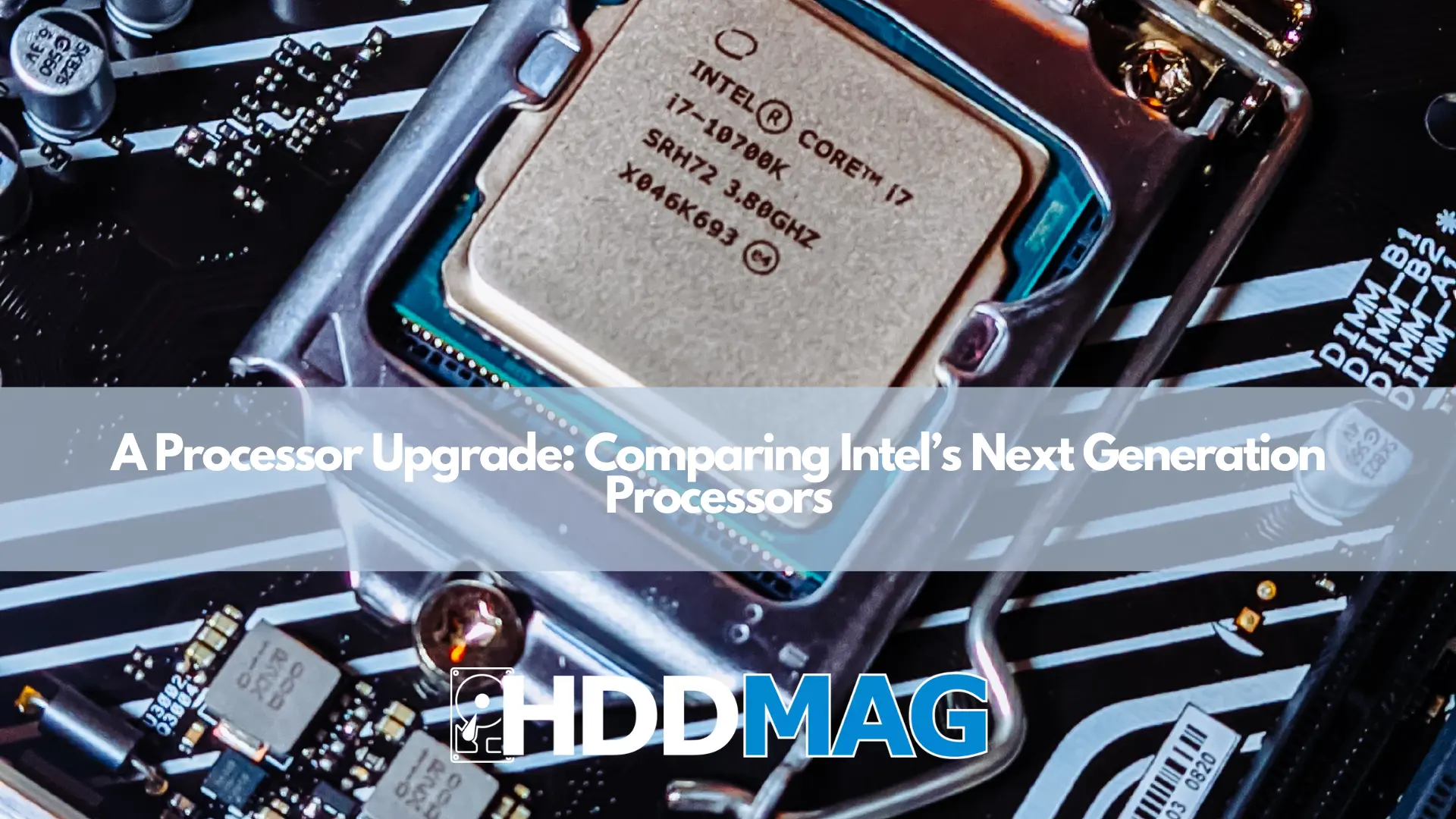A Processor Upgrade: Comparing Intel’s Next-Generation Processors

Introduction
When it comes to personal computers, the power of the processor is arguably the most important factor. The latest generation of Intel processors are designed to boost performance, often in dramatic ways. This article will compare these newest processors against their previous generation counterparts, examining key differences that you need to know about.
Key Differences
The latest generation of Intel processors has several advantages over their predecessors. For example, they feature an upgraded core architecture, allowing them to process data more efficiently while consuming less energy. Additionally, they offer improved overclocking capabilities (controlling a processor’s internal clock rate), allowing users to further increase their computer’s performance. Finally, they have larger access caches (temporary data stores used by a computer’s CPU) which can provide even faster performance than before.
Improvements to the core architecture include faster data retrieval, memory operations, and improved instruction fetching. This helps to speed up computing tasks while also reducing power consumption. Improved overclocking abilities allow users to manually adjust the internal clock rate of their processor in order to squeeze out additional performance by running their processor at higher frequencies than what its factory settings are capable of. This is especially beneficial for gamers, who may want more frames per second when playing on high settings. Finally, larger access caches help optimize system performance by making it easier for a CPU to access frequently used data without having to constantly grab it from RAM or storage. This can drastically improve processing times and make multitasking smoother.
Performance Benefits
One of the biggest benefits of upgrading to the latest generation of Intel processors is improved performance. Core architecture enhancements allow for greater efficiency while overclocking capabilities give better control over your machine’s speed and power output. Furthermore, larger access caches have also led to significant gains in responsiveness and multitasking ability when compared with older models by taking advantage of a processor’s improved core architecture, users can enjoy significant gains in both performance and energy efficiency. This means that the same tasks can be completed with less power used than before. Overclocking capabilities further increase performance by allowing users to manually increase their processor’s clock rate beyond its factory settings, making it very attractive to high-end gamers looking for that extra edge. Additionally, larger access caches translate into faster response times and multitasking abilities, meaning you can accomplish more in less time than you could on older models.
Cost Considerations
The cost associated with upgrading to a new generation of Intel processor should be considered as well when making a purchase decision. Newer models typically require more expensive motherboards and cooling solutions due to changes in size and design between generations that may make compatibility issues with existing components difficult or impossible to achieve without replacement parts purchased separately.
Not only do the motherboard and cooling costs need to be taken into consideration when upgrading to a new processor, but there may also be additional expenses involved depending on the particular model chosen. Compatibility issues between generations of Intel processors can result in more expensive replacement components such as RAM modules or graphics cards being needed, while higher clock speeds will also result in greater electricity bills as well. As such, it is important to carefully calculate the total cost of any potential processor upgrade before making a final decision.
Our list of best intel processors 2023
1. Intel Core i9-12900K – This 11th Gen flagship processor boasts 8 cores and 16 threads, running at up to 5.3GHz on a single core and 4.8GHz across all cores. It also includes an impressive 20MB Smart Cache and Thunderbolt 4 support. Price: $409 USD.
2. Intel Core i7-12700K – Offering 8 cores and 16 threads with a base clock speed of 3.6GHz and a boost of up to 5GHz, this unlocked 11th Gen processor offers great performance for gaming or content creation. Price: $285 USD
3. Intel Core i5-12400 – Featuring 6 cores and 12 threads, this mid-range 11th Gen option operates at up to 4.9GHz across all cores and offers intel UHD graphics for added visual quality when gaming or creating media content. Price: $229 USD
4. Intel Core i3-12100F – The 11th Generation entry level processor features 4 cores and 8 threads running between 3.6 GHz to 4GHz in Turbo mode, along with integrated UHD graphics for smooth visual processing without the need for a dedicated graphics card. Price: $110 USD
Conclusion & FAQs
Despite additional costs associated with upgrades from one generation of Intel processes to the next, there are definite benefits when it comes to faster speeds and increased efficiency attributable to improvements in architecture and other factors mentioned above. The following FAQs aim at providing further information on this topic:
Q: How much faster is the newer generation?
A: The exact speeds depend on exact model variations but generally speaking new generations perform significantly better than earlier ones thanks largely in part of advancements in core architectures and overclocking abilities available on some models.
Q: Is it worth upgrading my current system?
A: It depends on your goals as well as budget considerations but if your current system is not meeting expectations then an upgrade may be necessary in order to get more out of your machine such as increased gaming performance or video editing capabilities for example..





![Non-Reference VS Reference Video Card [Explained]](https://hddmag.com/wp-content/uploads/2017/07/Reference-vs-no-reference-GPU-768x415.jpg)
